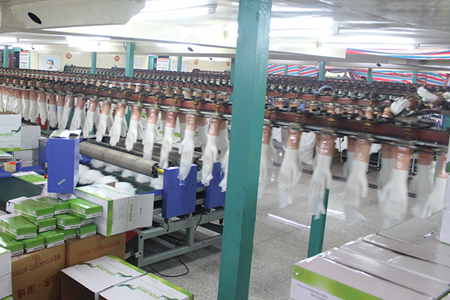2023/9/21

Personal Protective Equipment for Coronavirus
The COVID-19 pandemic has underscored the critical importance of Personal Protective Equipment (PPE) in controlling the spread of infectious diseases. PPE serves as a frontline defense for healthcare workers, essential personnel, and the general public by creating a barrier against the virus, reducing transmission risk, and protecting individuals from infection.
What is Personal Protective Equipment (PPE)?
Personal Protective Equipment refers to wearable items designed to protect individuals from exposure to infectious agents, hazardous materials, or physical harm. In the context of COVID-19, PPE primarily includes masks, gloves, face shields, gowns, and eye protection.
Types of PPE for COVID-19
1. Masks and Respirators
Cloth Masks: Used by the general public to reduce the spread of respiratory droplets.
Surgical Masks: Disposable masks that protect against large droplets and splashes.
N95 Respirators: Provide a higher level of filtration, blocking at least 95% of airborne particles. Critical for healthcare workers in close contact with COVID-19 patients.
2. Gloves
Disposable gloves, usually made of latex, nitrile, or vinyl, help protect hands from contamination. Gloves are essential during patient care or handling potentially contaminated surfaces but must be used correctly to avoid cross-contamination.
3. Face Shields and Goggles
These protect the eyes from respiratory droplets and splashes. Face shields also provide additional coverage for the face, complementing mask use.
4. Gowns and Coveralls
Worn by healthcare workers, gowns and coveralls protect clothing and skin from exposure to infectious materials. They are especially important during procedures that generate aerosols or involve bodily fluids.
Proper Use of PPE
Donning and Doffing: Proper techniques for putting on and removing PPE are essential to prevent self-contamination.
Hand Hygiene: Always clean hands before and after handling PPE.
Disposal: Single-use PPE should be discarded correctly in designated biohazard containers.
Reuse: Some PPE, like N95 respirators, can be reused under strict guidelines if supplies are limited, but generally, PPE is designed for single use.
Importance of PPE in COVID-19 Control
PPE is vital in breaking the chain of infection. For healthcare workers, it reduces the risk of contracting and spreading COVID-19. For the public, wearing masks and practicing physical distancing help control community transmission. The correct and consistent use of PPE, combined with other preventive measures like vaccination and hygiene, forms a comprehensive defense against COVID-19.
Challenges and Considerations
Supply Shortages: Early in the pandemic, PPE shortages posed significant risks worldwide, highlighting the need for adequate stockpiling and supply chains.
Training: Proper training on PPE use is necessary to maximize effectiveness.
Comfort and Compliance: PPE can be uncomfortable for long periods, which may affect compliance; innovations aim to improve comfort without compromising protection.
Conclusion
Personal Protective Equipment remains an essential tool in the fight against COVID-19. Its appropriate use protects frontline workers and the community, helping to reduce transmission and save lives. As the pandemic evolves, continued emphasis on PPE availability, education, and proper use will be key components in managing COVID-19 and future infectious disease threats.




 WhatsApp
WhatsApp
Send us your message
You can send an email asking for the price and detailed information of this product. We will reply you as soon as we receive your email